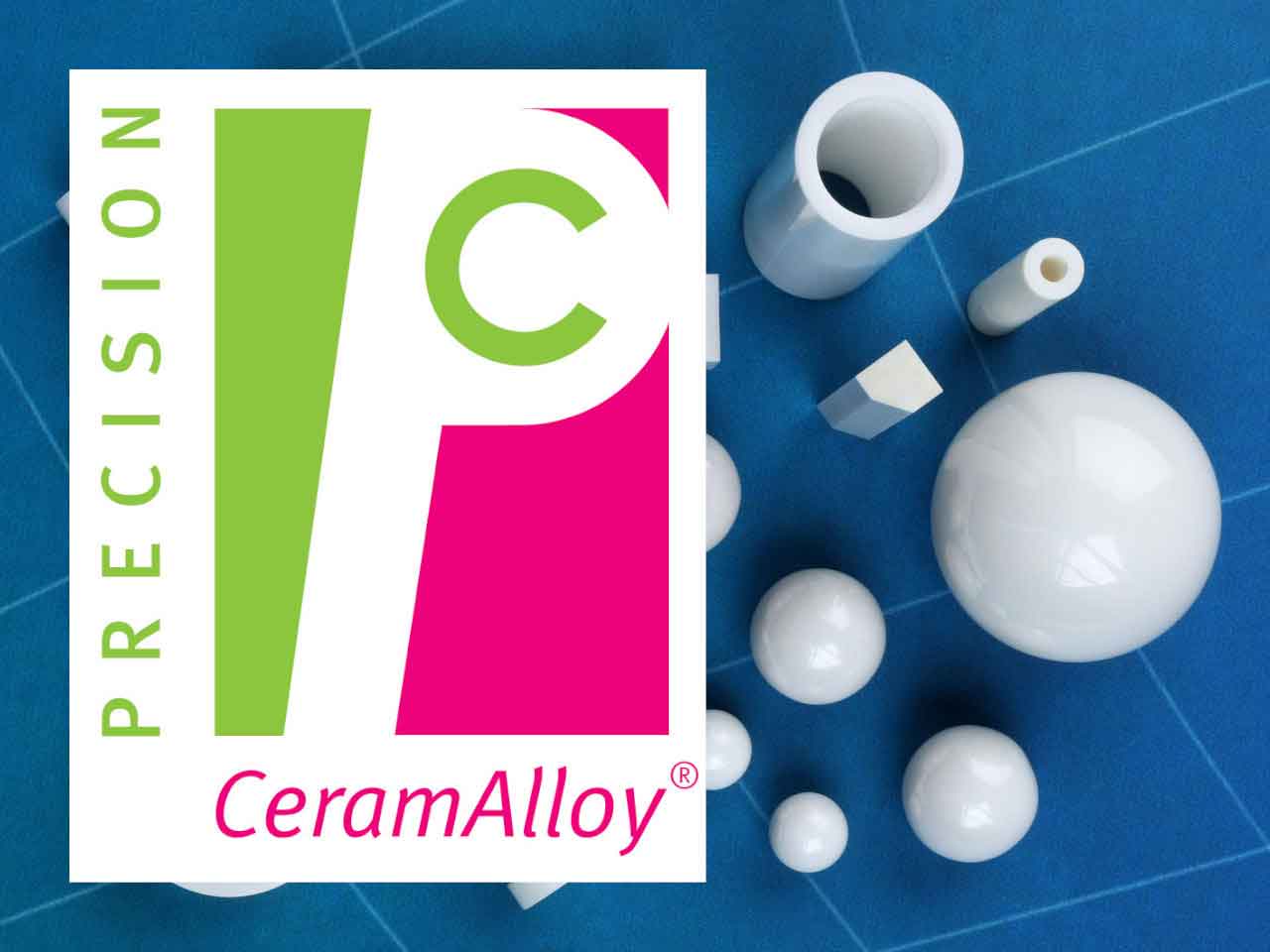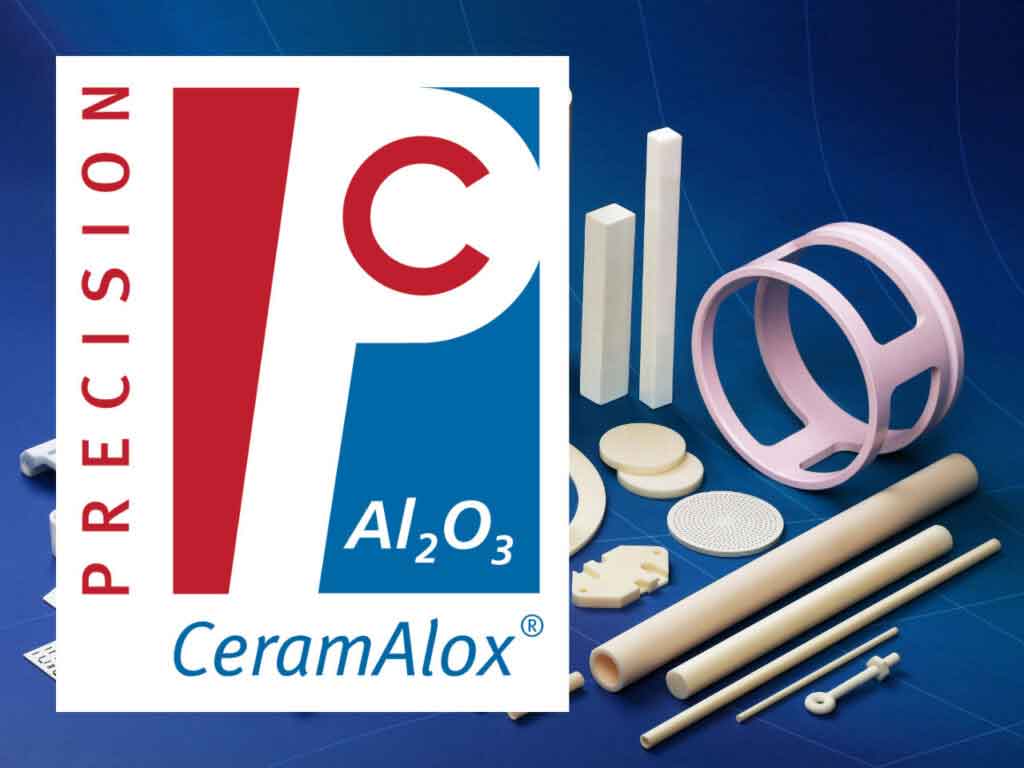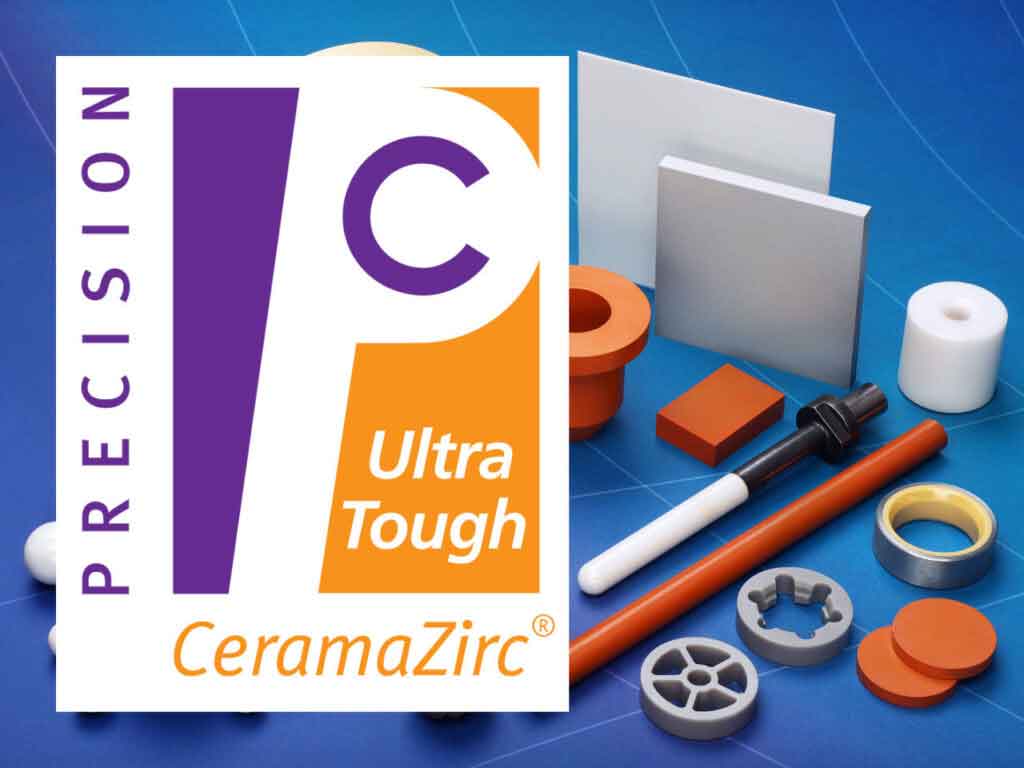Alumina Toughened Zirconia (Al2O3-Zr) – CeramAlloy ATZ™
Material Advantages
- Use temperatures up to 1500°C
- Chemical inertness
- Wear resistance
- High bending strength
- High fracture toughness
- High hardness
- High performance Alumina-Zirconia ceramic composite
- Sintered to near theoretical density or Hot Isostatic Pressed for enhanced reliability
- Higher strength than Zirconia while maintaining fracture toughness
- Ideal for application where higher mechanical strength is critical
Applications
- High pressure equipment – ball valve balls and seats
- Rollers and guides for metal forming
- Thread and wire guides
- Metal extrusion dies
- Deep well down-hole valves and seats
- Shaft bearings/bushings
Material Properties
General Properties
Composition
Unit
CeramAlloy ATZ
Color
Unit
CeramAlloy ATZ
Mechanical Properties
Density
Unit
CeramAlloy ATZ
Young's Modulus
Unit
CeramAlloy ATZ
Fracture Toughness
Unit
CeramAlloy ATZ
Poisson's Ratio
Unit
CeramAlloy ATZ
Compressive Strength
Unit
CeramAlloy ATZ
Flexural Strength
Unit
CeramAlloy ATZ
Hardness HV0.5
Unit
CeramAlloy ATZ
Thermal Properties
Max Use Temp
Unit
CeramAlloy ATZ
Coefficient of Expansion
Unit
CeramAlloy ATZ
Thermal Conductivity, 25°C
Unit
CeramAlloy ATZ
Thermal Shock Resistance ΔT
Unit
CeramAlloy ATZ
* Coefficient of Thermal Expansion (CTE) describes how the size of an object changes with a change in temperature.
Electrical Properties
Dielectric Strength
Unit
CeramAlloy ATZ
Volume Resistivity @ 25°C
Unit
CeramAlloy ATZ
Disclaimer: The values presented are mean and typical of those resulted from test samples. They are provided as an indication only to serve as guidance in the design of ceramic components and are not guaranteed in any way. The actual values can vary according to the shape and size of the envisioned component.
Datasheets

Alumina Toughened Zirconia
CeramAlloy ATZ
CeramAlloy Material Machining
CeramAlloy can be machined in green, biscuit, or fully dense states. While in the green or biscuit form, it can be machined relatively easily into complex geometries. However, the sintering process that is required to fully densify the material causes the CeramAlloy body to shrink approximately 20%. This shrinkage means that it is impossible to hold very tight tolerances when machining the CeramAlloy pre-sintering.
In order to achieve very tight tolerances, fully sintered material must be machined/ground with diamond tools. In this process a very precise diamond coated tool/wheel is used to abrade away the material until the desired form is created. Due to the inherit toughness and hardness of the material, this can be a time-consuming and costly process.
China Ceramic Parts is your machining specialist for your advanced ceramic prototyping & manufacturing needs. We are always happy to use our many years of advanced ceramics experience to provide advice on materials, design, and application. If you would like to buy CeramAlloy plates, rods, tubes or custom machined components, please contact us and one of our experts will be happy to assist you.
Frequently Asked Questions
- What can Zirconia Toughened Alumina ceramic (CeramAlloy) be used for?
- Wire forming/drawing dies
- Insulating rings in thermal processes
- Precision shafts and axles in high wear environments
- Wear resistance pads
- Sandblasting nozzles
- Refractory material
- Extrusion dies
- Bushings and caps
- Fiber optic ferrules and sleeves
- Bearings & rollers
- Welding nozzles & pins
- Laser parts
- Electric insulator
- Ceramic guiders
- Medical and surgical component
- Mechanical seals
- Pumps, pistons, and liners
- What's the difference between Zirconia, Alumina, and Zirconia Toughened Alumina (CeramAlloy)?
While Zirconia has the highest fracture toughness of all the oxide monolith ceramic materials, Alumina is one of the most cost effective ceramic materials yet exhibiting very high hardness, thermal stability and favourable electrical properties. CeramAlloy ZTA is a composite material based on Alumina and Zirconia and therefore combining to a certain extent the favourable properties of the two main constituents. So CeramAlloy ZTA will retain the very high hardness of Alumina but also show an increase in fracture toughness and bending strength owing to its Zirconia component so a true “best of both worlds”.
- What are the properties of Zirconia Toughened Alumina (CeramAlloy)?
The following are some general properties of CeramAlloy ZTA ceramic.
- High density – up to 4.1 g/cm^3
- High flexural strength and hardness
- Good fracture toughness – moderate impact resistant
- High maximum use temperature
- Wear resistant
- Good frictional behaviour- favourable coefficient of friction
- Electrical insulator
- Corrosion resistance in acids and alkalis
- What is Zirconia Toughened Alumina ceramic (Ceramalloy)?
CeramAlloy ZTA is a composite material based on Alumina and Zirconia and therefore combining to a certain extent the favourable properties of the two main constituents.



